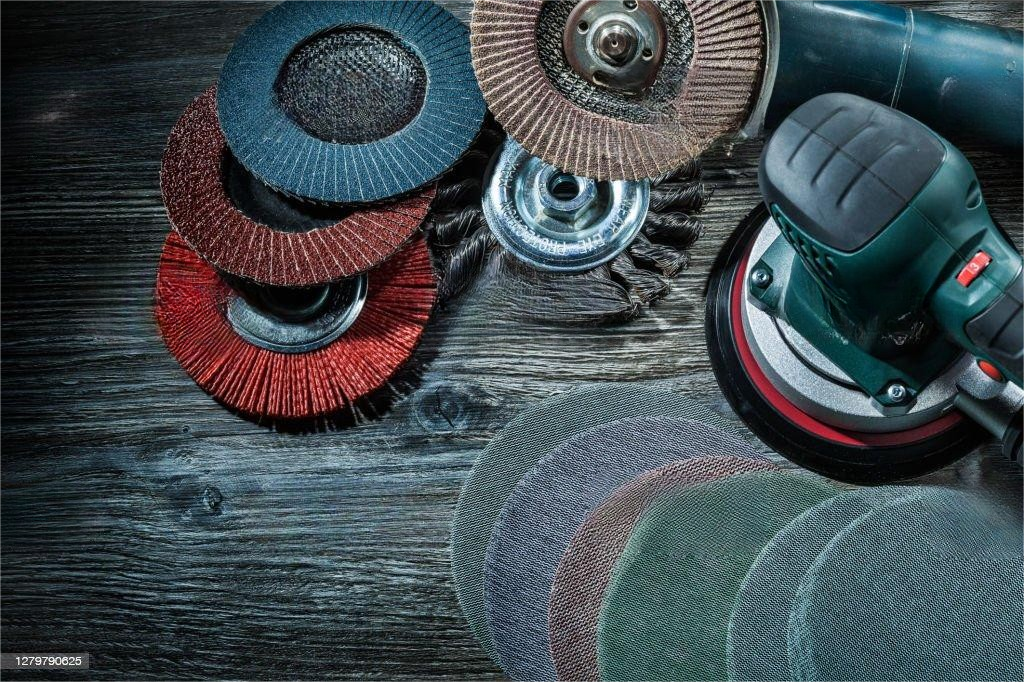Surface conditioning products refer to a range of abrasive materials, tools, and techniques used in metal fabrication to prepare surfaces for welding, painting, or other finishing processes. These products are essential in metalworking to remove rust, scale, and other contaminants from the surface of the metal, improving its appearance and performance. Surface conditioning products come in different forms, including sandpaper, abrasive discs, abrasive belts, grinding wheels, wire brushes, and polishing compounds. In this article, we will discuss the various types of surface conditioning products and how they are used in metal fabrication.
What surface conditioning products are included?
- Sandpaper
Sandpaper is a type of abrasive paper used to smooth and polish rough surfaces. It consists of a paper or cloth backing and an abrasive material, such as aluminum oxide, silicon carbide, or garnet, adhered to it. Sandpaper is available in different grits, ranging from coarse to fine. Coarse grits sandpaper is for removing rust, paint, and other stubborn contaminants from the metal surface, while finer grits sandpaper is for polishing and refine the surface.
Sandpaper in metal fabrication is commonly used to prepare surfaces for painting or welding. For instance, before welding, the metal surface needs to be clean and free from rust and scale to achieve a strong and seamless bond. Sandpaper is also used to remove scratches and other imperfections from the surface of the metal, improving its appearance.
- Abrasive Discs
Abrasive discs are thin, circular discs made of abrasive materials, such as aluminum oxide or zirconia alumina. They are attached to a backing pad or disc holder and used with an angle grinder or other power tools to remove rust, paint, and other contaminants from the metal surface. Abrasive discs come in different shapes and sizes, including flap discs, fiber discs, and cut-off wheels.
Flap discs are for grinding and finishing applications, while fiber discs are for heavy stock removal and surface preparation. Cut-off wheels are used to cut through metal and other materials quickly and efficiently. Abrasive discs are an excellent choice for metal fabrication, as they are highly efficient and produce smooth and consistent finishes.
- Abrasive Belts
Abrasive belts are similar to discs, but they are designed for use on larger surfaces, such as metal sheets or pipes. They are available in a range of sizes and grits, making them suitable for a variety of applications.
Abrasive belts in metal fabrication are often used for grinding, deburring, and polishing metal surfaces. They can also be used for shaping and contouring metal surfaces, such as in the case of metal pipes.
- Grinding Wheels
Grinding wheels are large, circular wheels made of abrasive materials, such as silicon carbide or aluminum oxide. They are used with a grinding machine to remove material from the surface of the metal, creating a smooth and even finish. Grinding wheels come in different sizes and shapes, including straight wheels, cylinder wheels, and dish wheels.
Grinding wheels in metal fabrication are used for shaping and smoothing metal parts, preparing surfaces for welding, and removing burrs and other imperfections. They are also used for sharpening cutting tools, such as drill bits and saw blades.
- Wire Brushes
Wire brushes are used to remove rust, paint, and other contaminants from the metal surface. They are made of wire bristles and come in different shapes and sizes, including cup brushes, wheel brushes, and hand-held brushes. Wire brushes are an excellent choice for cleaning and preparing surfaces, as they are highly effective and easy to use.
Wire brushes in metal fabrication are commonly used to remove rust and scale from metal parts before welding. They are also used to clean metal surfaces before painting or other finishing processes. Wire brushes are available in different types of wire, including carbon steel, stainless steel, and brass.
- Polishing Compounds
Polishing compounds are used to achieve a high gloss or mirror-like finish on metal surfaces. They are made of fine abrasive particles, such as aluminum oxide or diamond, suspended in a liquid or paste. Polishing compounds are applied to the surface of the metal using a polishing wheel or by hand, and they are available in different grades, ranging from coarse to fine.
Polishing compounds in metal fabrication are used to enhance the appearance of metal parts , particularly those used in decorative or high-end applications, such as automotive parts, jewelry, and metal sculptures. They are also used to remove scratches and other imperfections from the surface of the metal.
Other Surface Conditioning Products
Apart from the above-discussed surface conditioning products, there are other products used in metal fabrication to prepare surfaces for finishing. These include:
- a) Rust Converters – These are chemicals that are used to convert rust into a stable, black substance that can be painted over.
- b) Solvent Cleaners – These are used to remove oil, grease, and other contaminants from the surface of the metal.
- c) Acid Etchants – These are used to create a surface texture or pattern on the metal surface for decorative purposes.
- d) Pickling Pastes – These are used to remove scale and other contaminants from the surface of stainless steel.
Conclusion
In conclusion, surface conditioning products are essential in metal fabrication to prepare surfaces for welding, painting, or other finishing processes. They come in different forms, including sandpaper, abrasive discs, grinding wheels, wire brushes, and polishing compounds. Each of these products has its unique properties and applications, and choosing the right product for the job is crucial in achieving the desired result. Metal fabricators need to be familiar with the different surface conditioning products and their applications to ensure that they are using the right product for the job.

